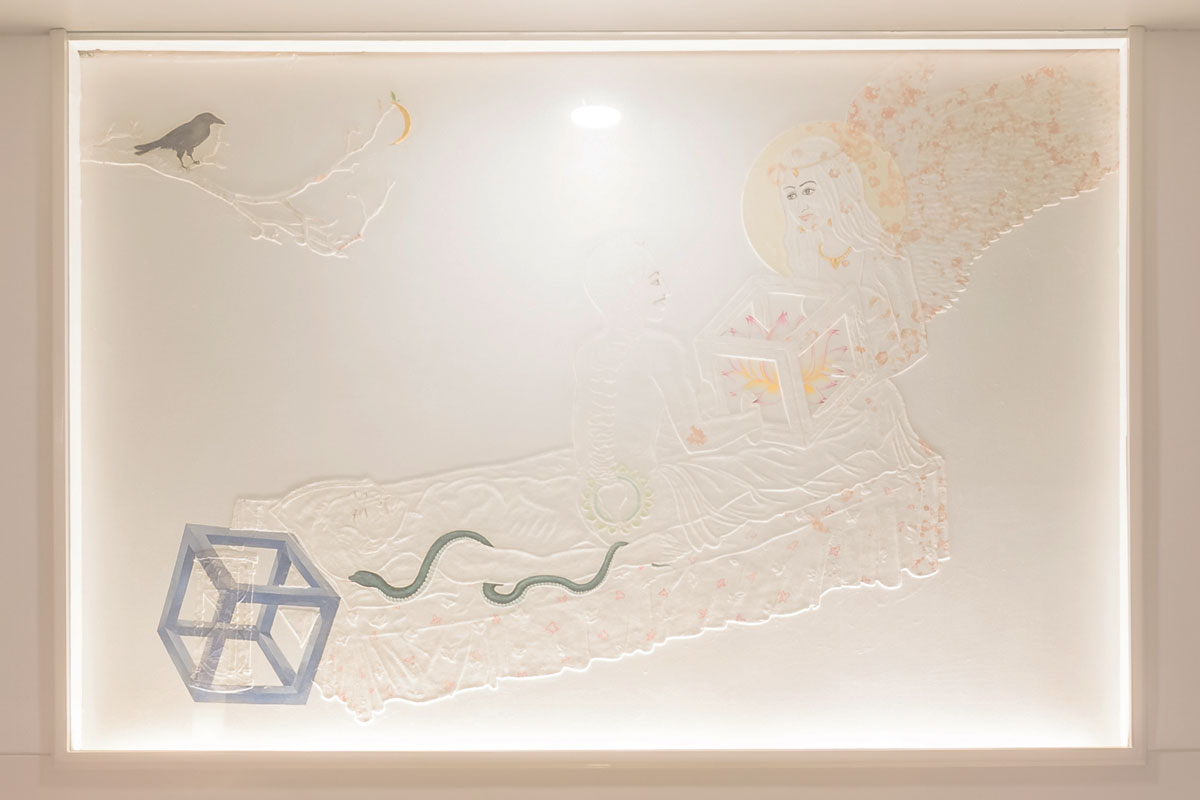The Mandu inlay on the floor is inspired by an ancient Indian water purification system in which water slowed and became clean as it flowed through the rough stones of the ancient canals. It symbolises the need to still mental activity. For this to happen, the mind must be cleansed of impurities like thought, desire, and attachment through focused effort.
The painting in the room depicts an out-of-body experience where the soul exits the body via the Sahasrara chakra. It is greeted by an angel who bestows on it a lotus, a symbol of purity, before guiding it to swarg lok, the seventh astral dimension. The crow on the branch represents death, while the hourglass shows that time is fleeting and relative.
The yog dand chair represents the control of the body, breath and senses. The bedside table is fashioned after a damaru. Its two-headed drum shape represents the opposing states of existence, conscious and unconscious. When the damaru vibrates, it emits distinct sounds that, when fused by resonance, produce a single, primal, and pure sound. The trishul or trident installation is the symbol of Shakti or dynamic energy. Its three prongs represent the three nadis in the human body: Ida, Pingla, and Sushumna. Kundalini travels through these three energy channels to reach the Sahasrara. The Lotus Lady in the bathroom symbolises the purity of the microcosm. She also represents the feminine energy or Shakti in the grihasth ashram, one of the four stages of life in Vedic culture.











